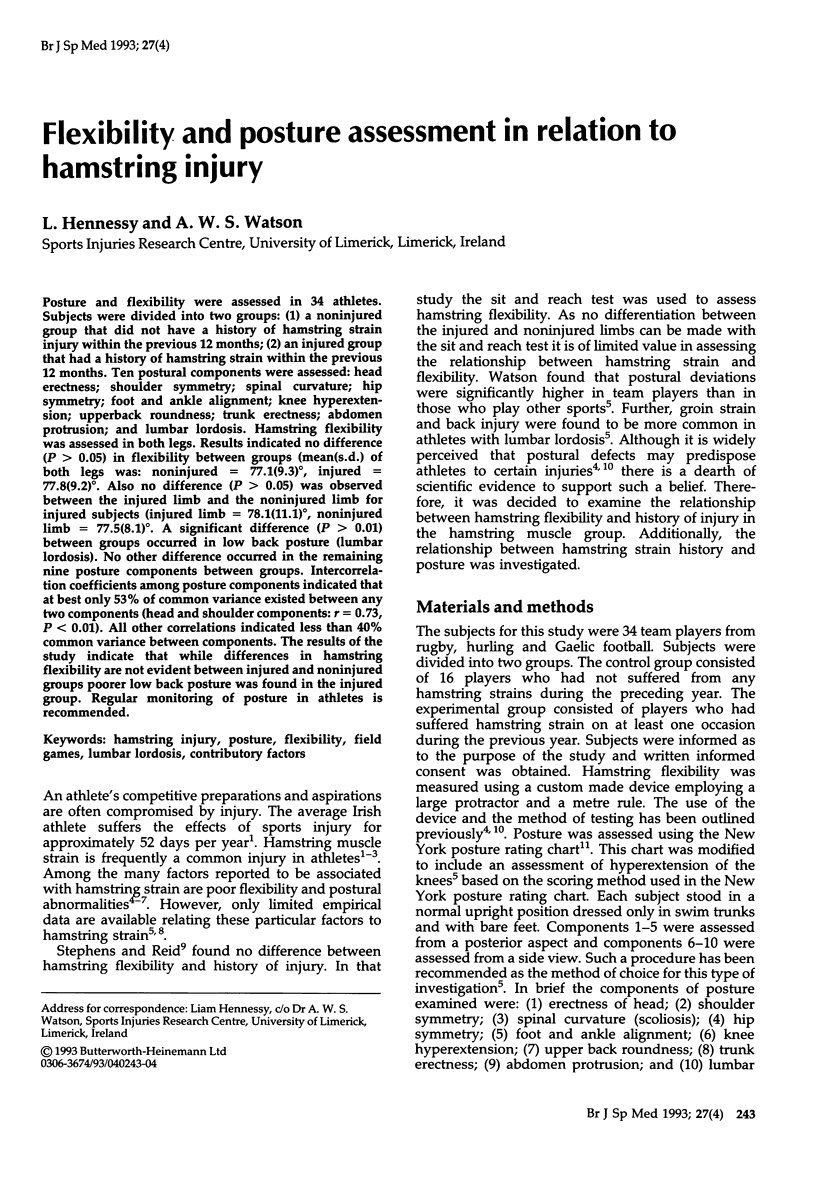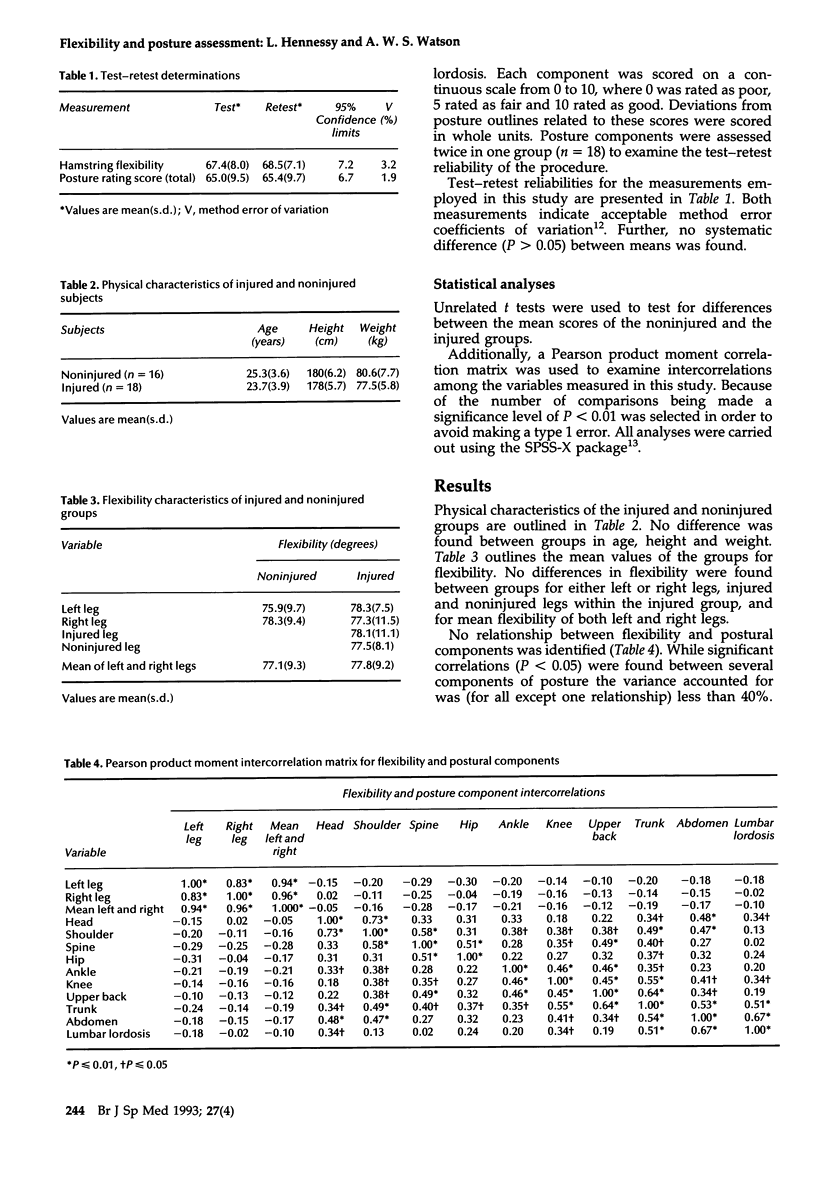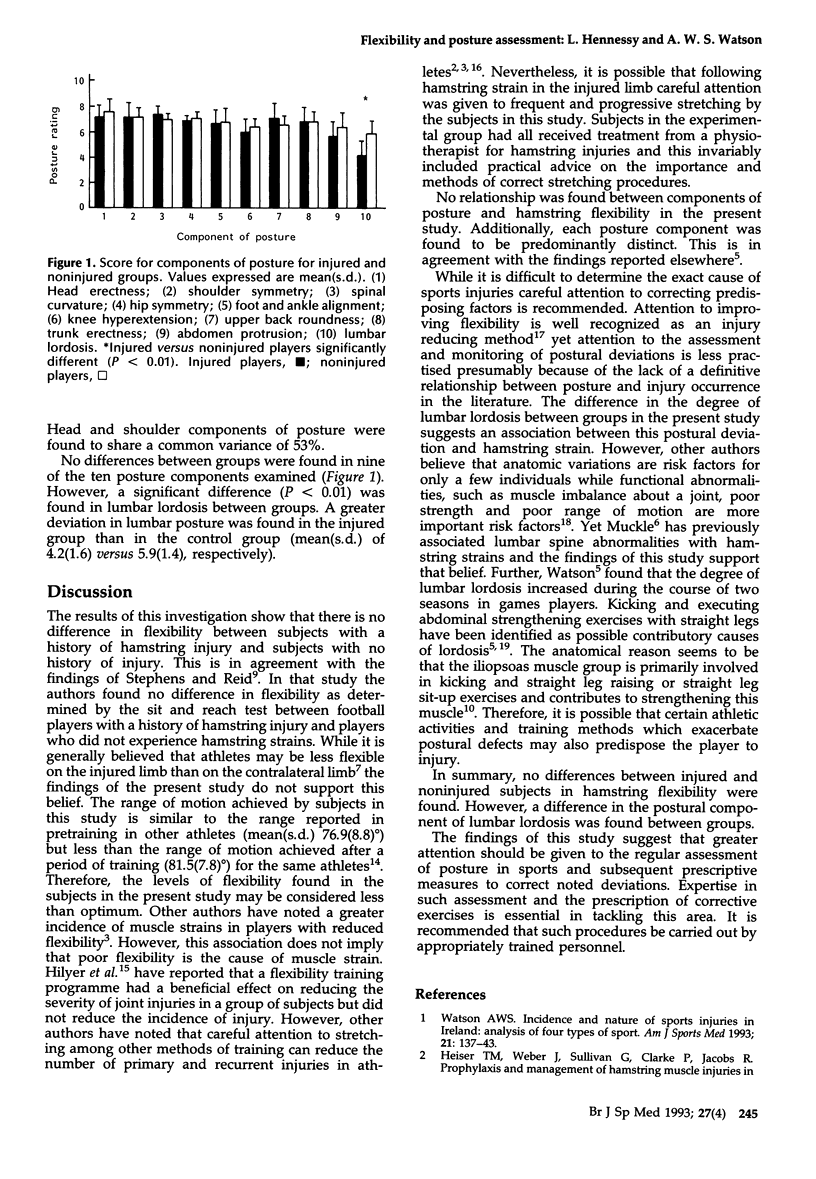Abstract
Posture and flexibility were assessed in 34 athletes. Subjects were divided into two groups: (1) a noninjured group that did not have a history of hamstring strain injury within the previous 12 months; (2) an injured group that had a history of hamstring strain within the previous 12 months. Ten postural components were assessed: head erectness; shoulder symmetry; spinal curvature; hip symmetry; foot and ankle alignment; knee hyperextension; upper back roundness; trunk erectness; abdomen protrusion; and lumbar lordosis. Hamstring flexibility was assessed in both legs. Results indicated no difference (P > 0.05) in flexibility between groups (mean(s.d.) of both legs was: noninjured = 77.1(9.3) degrees, injured = 77.8(9.2) degrees. Also no difference (P > 0.05) was observed between the injured limb and the noninjured limb for injured subjects (injured limb = 78.1(11.1) degrees, noninjured limb = 77.5(8.1) degrees. A significant difference (P < 0.01) between groups occurred in low back posture (lumbar lordosis). No other difference occurred in the remaining nine posture components between groups. Intercorrelation coefficients among posture components indicated that at best only 53% of common variance existed between any two components (head and shoulder components: r = 0.73, P < 0.01). All other correlations indicated less than 40% common variance between components. The results of the study indicate that while differences in hamstring flexibility are not evident between injured and noninjured groups poorer low back posture was found in the injured group. Regular monitoring of posture in athletes is recommended.
Full text
PDF



Selected References
These references are in PubMed. This may not be the complete list of references from this article.
- Ekstrand J., Gillquist J. Soccer injuries and their mechanisms: a prospective study. Med Sci Sports Exerc. 1983;15(3):267–270. doi: 10.1249/00005768-198315030-00014. [DOI] [PubMed] [Google Scholar]
- Ekstrand J., Gillquist J. The avoidability of soccer injuries. Int J Sports Med. 1983 May;4(2):124–128. doi: 10.1055/s-2008-1026025. [DOI] [PubMed] [Google Scholar]
- Hilyer J. C., Brown K. C., Sirles A. T., Peoples L. A flexibility intervention to reduce the incidence and severity of joint injuries among municipal firefighters. J Occup Med. 1990 Jul;32(7):631–637. doi: 10.1097/00043764-199007000-00015. [DOI] [PubMed] [Google Scholar]
- Liemohn W. Factors related to hamstring strains. J Sports Med Phys Fitness. 1978 Mar;18(1):71–76. [PubMed] [Google Scholar]
- Muckle D. S. Associated factors in recurrent groin and hamstring injuries. Br J Sports Med. 1982 Mar;16(1):37–39. doi: 10.1136/bjsm.16.1.37. [DOI] [PMC free article] [PubMed] [Google Scholar]
- Watson A. W. Incidence and nature of sports injuries in Ireland. Analysis of four types of sport. Am J Sports Med. 1993 Jan-Feb;21(1):137–143. doi: 10.1177/036354659302100123. [DOI] [PubMed] [Google Scholar]
- Watson A. W. Posture and participation in sport. J Sports Med Phys Fitness. 1983 Sep;23(3):231–239. [PubMed] [Google Scholar]


